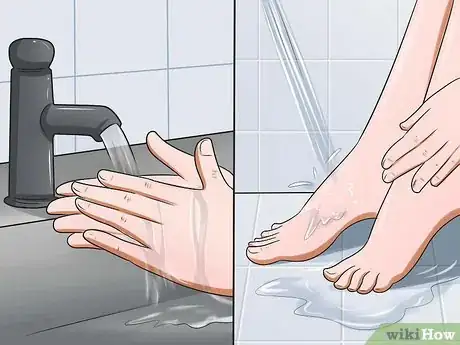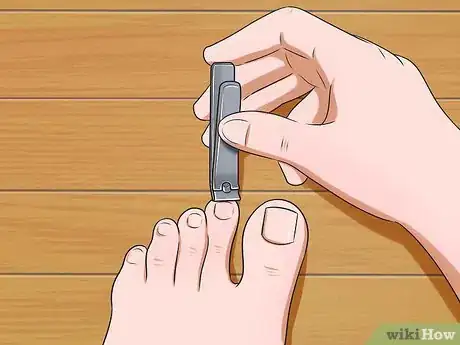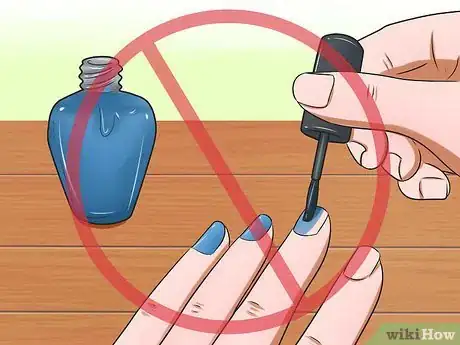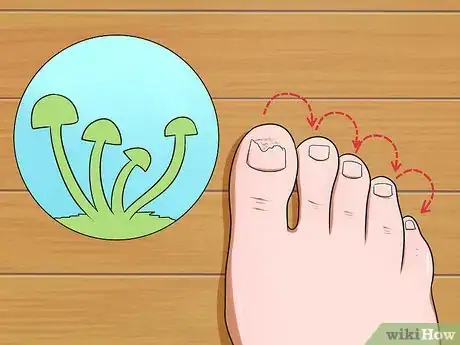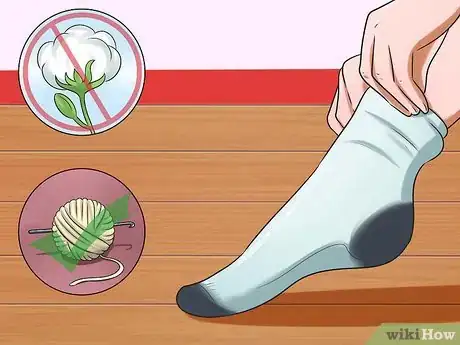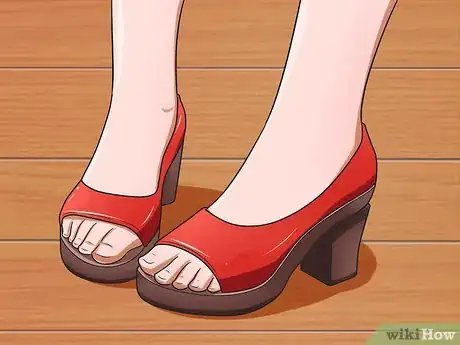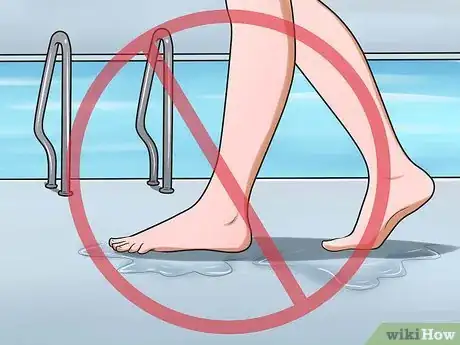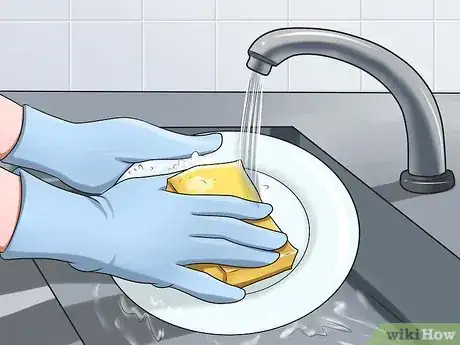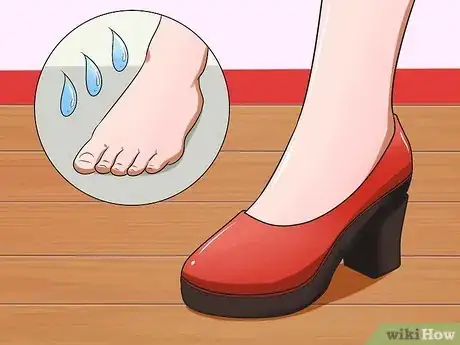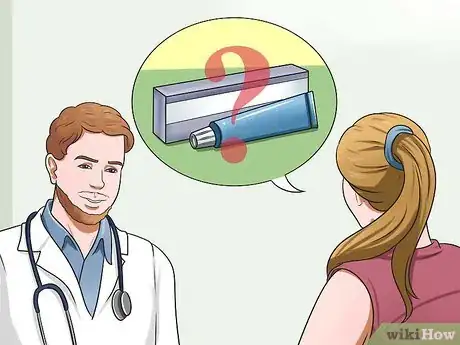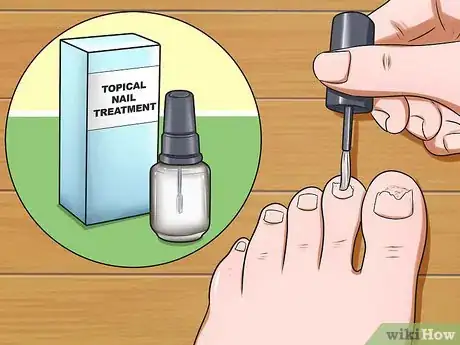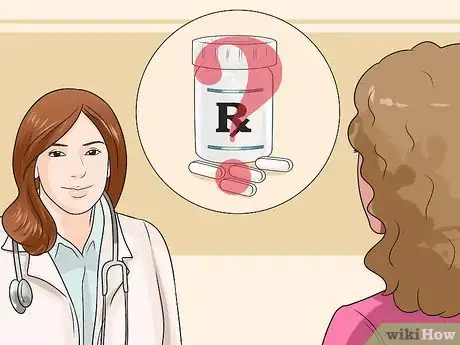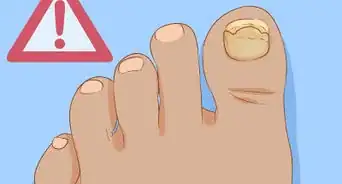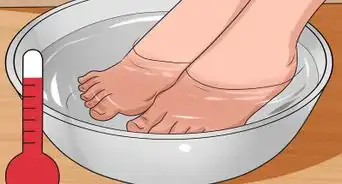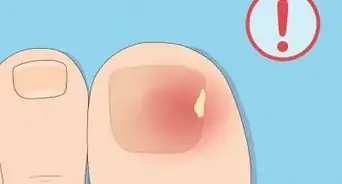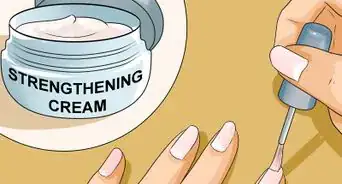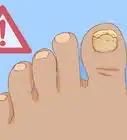This article was medically reviewed by Luba Lee, FNP-BC, MS. Luba Lee, FNP-BC is a Board-Certified Family Nurse Practitioner (FNP) and educator in Tennessee with over a decade of clinical experience. Luba has certifications in Pediatric Advanced Life Support (PALS), Emergency Medicine, Advanced Cardiac Life Support (ACLS), Team Building, and Critical Care Nursing. She received her Master of Science in Nursing (MSN) from the University of Tennessee in 2006.
This article has been viewed 52,983 times.
There are a variety of strategies to prevent nail fungus, from basic hygienic measures to diminishing other risk factors. If you follow these strategies, you will hopefully be able to avoid developing a fungal infection on your fingernails or toenails; however, if an infection does develop, there are medications you can use to treat it and to hopefully prevent future episodes.
Steps
Trying Simple Hygiene Measures
-
1Wash your hands and feet regularly.[1] Washing your hands and feet regularly with warm water and soap (including washing your feet at least once a day when you have a shower) helps to keep them clean. This, in turn, minimizes the chance that a fungal infection will grow on your nails. Make sure that you wash between your fingers and toes, as well as over the nails themselves. Regular and thorough washing is one of the best things you can do for prevention.
-
2Trim your nails regularly. It is important to clip your nails regularly to keep them short. This minimizes the surface area upon which fungi can grow, and it also decreases the moisture and dirt that can get trapped under long nails. Regular trimming increases the hygiene of your nail environment, hence reducing the probability of developing a fungal infection.Advertisement
-
3Keep your nails natural. As much as nail polish and artificial nails may seem aesthetically appealing, they trap additional moisture in your nails and actually increase your risk of developing a fungal infection. Avoid nail polish and artificial nails if possible. Also, if you attend a nail salon for regular nail maintenance, ensure that it is a reliable one that keeps their instruments very clean, so as not to increase your chances of infection in any way.
- If you are concerned about nail fungus but want to still go for a pedicure or manicure, it is okay to do so. The cleaning and trimming of your nails can actually be beneficial.
- However, you are advised to forego the nail polish at the end. Your nails can still look nice and presentable after a pedicure or manicure, even without nail polish.
- Also avoid artificial nails or any artistic decorations on your nails.
-
4Be aware that fungal infections can spread from one nail to another.[2] Therefore, if you have developed a fungal infection on one nail, it is important to wash your hands whenever you touch that nail to minimize the chances that the infection will spread from one nail to your other nails.
Trying Other Preventative Strategies
-
1Choose socks that absorb sweat. Because the likelihood of developing a fungal infection relates to the degree of moisture (fungi thrive in moist environments), choosing socks that are made of a material that does not absorb the moisture of sweat can be a very helpful preventative step.
- Socks made of nylon, polypropylene, or wool are all great options.
- Change your socks often, especially if you have sweaty feet.
- It is best to avoid cotton socks if possible.
-
2Consider your choice of footwear. In addition to thriving in moist environments, fungi also thrive in confined spaces. This is why wearing tight shoes throughout the day - and particularly old shoes - can increase your risk of developing a nail fungal infection.
- Consider wearing open-toed shoes for part of the day if this is an option for you.
- Also replace old shoes with new ones. Alternatively, you can use a disinfectant or an antifungal powder in old shoes to get rid of any possible contamination.
- Wear separate shoes for exercise than you do for work and everyday life. Exercise shoes hold a lot of sweat and moisture so may predispose you more to fungal infections.
-
3Do not walk barefoot in public places. While wearing confining shoes for a long period of time can be a risk factor for fungal infections, so, too, can walking barefoot in public places where fungi may be present. Wear sandals while walking at public swimming pools, in the shower room, and in the locker room. This will greatly diminish your chance of contracting a nail fungal infection.
-
4Wear rubber gloves to keep moisture off your hands. For tasks such as cleaning or washing dishes, where your fingernails may be exposed to dirt and moisture, one option is to wear rubber gloves. However, it is important to dry the gloves thoroughly after each use. Flip the gloves inside out to ensure that the inside is dry as well as the outside.
-
5Understand why fungal infections are more common on the toenails than on the fingernails. While it is possible to develop a fungal infection on your toenails as well as your fingernails, the toenails are far more common. This is because your feet spend more time in confined spaces (such as wearing socks and shoes), and may also be exposed to more moisture (such as the sweat and dampness from these environments).
- The toes are also located further from the heart, so the circulation is weaker than it is to the fingers.
- Poorer circulation correlates to a decreased ability for your immune system to fight off potential fungal infections.
Seeking Medical Treatment
-
1Know what medications are available if you do develop a fungal infection.[3] If you get a fungal infection on your toenails or fingernails, you can see your doctor for some oral antifungal medications. Nail fungus can be treated with topical medication, oral medication or a combination of the two. Your doctor will most likely advise you to take the medication for six to 12 weeks; however, it may take up to four months for your fungal infection to fully resolve.
-
2Try topical nail treatments.[4] Most topical agents cannot penetrate the nail plate and cure rates are less than 10%. The best-penetrating formulation of ciclopirox is a nail lacquer Penlac, which you apply daily for up to one year. The downside of this lacquer is that it is costly and recurrences are common; however, it is safer than oral therapy.
-
3Ask about oral medications. When topical therapy is insufficient, oral agents should be considered. Talk to your doctor about the benefits versus the risks of oral therapy. Even with successful therapy, relapse is common. Two most common agents used in oral therapy are itraconazole (Sporanox) and terbinafine (Lamisil).
- These drugs interact with many other medications, both prescription and over-the-counter, so make sure you tell your doctor if you are taking any other medications or supplements.
- They can also have severe side effects, including irregular heartbeat, liver damage, decreased urine, joint pain, loss of hearing, vomiting, depression, and more. Call your doctor immediately if you experience any of these serious side effects.[5]
- Oral antifungals also require you to undergo continuous monitoring and lab tests to check for side effects.
-
4Try combination therapy. Oftentimes, the combination of an oral medication and a topical medication lead to the best results when it comes to clearing up a fungal infection. Your doctor might suggest you do a combination of these treatments. Your doctor can prescribe these to you if needed.
-
5Opt for surgical nail removal.[6] For fungal infections that are extremely severe and/or painful, and that cannot be resolved with medical treatments alone, surgery is an option. The infected part of the nail may be cut out and removed, and the healing time will be the time it takes to grow a new nail back in its place. Surgery is used as a last resort for fungal infections that are not able to be successfully treated in any other way.
-
6Consider an alternative approach to treating nail fungus. You may want to try natural treatments on you fungus. If you are using an oral treatment talk to your doctor or pharmacist before trying an alternative treatment, as they may interact. Snakeroot extract can be applied to your affected nail every third day for a month, then twice a week for the second month, and once a week for the third month. Tea tree oil is also can be helpful. Apply twice daily directly onto the nail. [7]
-
7Note that repeat infections are common.[8] Even after you have cleared up and successfully treated your fungal infection, it is still important to practice preventative measures to diminish the risk of the infection recurring. It is very common for fungal infections to come back, and it is in your hands to take daily steps to prevent this.
References
- ↑ https://www.nlm.nih.gov/medlineplus/ency/article/001330.htm
- ↑ https://www.nlm.nih.gov/medlineplus/ency/article/001330.htm
- ↑ http://emedicine.medscape.com/article/1105828-treatment
- ↑ http://emedicine.medscape.com/article/1105828-treatment
- ↑ https://www.drugs.com/mtm/itraconazole.html
- ↑ http://emedicine.medscape.com/article/1105828-treatment
- ↑ http://www.mayoclinic.org/diseases-conditions/nail-fungus/basics/alternative-medicine/con-20019319
- ↑ http://emedicine.medscape.com/article/1105828-treatment
